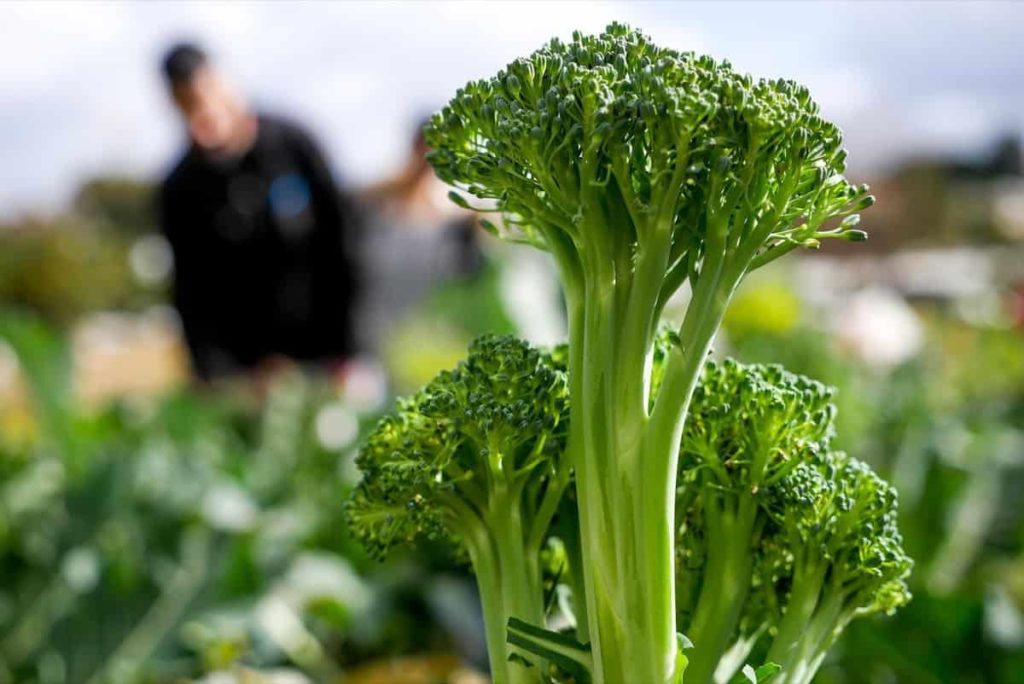- This topic is empty.
- AuthorPosts
- Aprili 12, 2025 at 11:53 mu #626405

Broccoli is a highly nutritious vegetable that continues to gain popularity due to its health benefits and culinary versatility. However, achieving optimal yield and quality depends on various agronomic factors, particularly the choice of variety and planting density.
Optimizing broccoli yield and quality through varietal selection and planting density can significantly improve productivity and market value, especially in commercial and smallholder farming systems. Proper management of these two critical elements ensures healthier crops, uniform head development, and maximized land use efficiency.
1. Importance Of Varietal Selection In Broccoli Production
Varietal selection plays a foundational role in determining the potential yield and quality of broccoli. Different broccoli varieties exhibit varying characteristics such as head size, color, maturity period, disease resistance, and tolerance to climatic conditions.
Choosing the right variety for a specific region ensures that the plant can thrive under local environmental conditions. Early-maturing varieties are beneficial in regions with short growing seasons, while heat-tolerant varieties are better suited for warmer climates.
Ultimately, selecting an appropriate variety sets the stage for high performance and reduced production risk.
2. Impact Of Planting Density On Growth And Development
Planting density directly influences how individual broccoli plants grow and compete for light, water, and nutrients. High planting density can result in smaller heads due to increased competition, while overly sparse spacing may lead to underutilized field space and lower overall yield.
The optimal density balances space efficiency with plant health, promoting adequate air circulation and light penetration. Proper spacing ensures uniform head development and reduces the risk of disease spread, which is essential for maintaining high-quality produce suitable for market standards.
3. Interplay Between Variety And Spacing For Optimal Yield
The relationship between broccoli variety and planting density is highly interconnected. Some varieties are naturally compact and can thrive at higher densities without sacrificing head size or quality, while others require more space to reach their full yield potential.
Trials and research have demonstrated that adjusting planting density to match the growth habit and nutrient demands of specific varieties leads to better crop performance. This synergy between variety and spacing allows for tailored cultivation strategies that maximize yield and ensure consistency in head formation and quality.
4. Influence On Marketable Quality And Postharvest Value
Beyond yield, the goal of broccoli production includes achieving high marketable quality—firm, dark green heads with tight florets and minimal defects. Both variety and planting density influence these attributes. Suitable spacing helps reduce the incidence of physiological disorders and ensures heads are well-formed and uniform.
Meanwhile, selecting a variety known for postharvest durability and aesthetic appeal enhances shelf life and consumer satisfaction. When these factors are optimized, farmers can access premium markets and secure better prices for their produce.
5. Practical Guidelines For Farmers And Growers
To effectively optimize yield and quality, farmers should begin by selecting varieties that are well-adapted to their local environment and intended market use. Next, determining the appropriate planting density based on variety characteristics and available land is crucial.
Extension services, seed companies, and field trials can provide valuable insights on ideal spacing and varietal performance.
Farmers should also consider crop rotation, soil fertility, and irrigation practices to complement these efforts. Regular monitoring and timely interventions further ensure that broccoli crops reach their maximum potential.
In conclusion, optimizing broccoli yield and quality through varietal selection and planting density is a critical strategy for enhancing productivity and profitability in vegetable farming. The careful pairing of suitable varieties with optimal spacing not only improves head size and uniformity but also supports overall crop health and marketability.
By applying these agronomic principles, farmers can make the most of their resources, meet market demands, and contribute to more sustainable and efficient broccoli production systems.
Read Also: A Comprehensive Guide to Successful Broccoli Farming
- AuthorPosts
- You must be logged in to reply to this topic.

